Corsair Force 40GB Boot Drive SSD Review
Corsair Force 40GB – Real World Tests
One of the most common operations performed on a PC is moving/copying files. Using a free application called Teracopy, we copied large numbers of two file types from one folder to another on the same drive. Teracopy allows us to objectively measure the time of transfer and using the same drive prevents other devices from tainting the outcome. The operation requires the drive to perform both sustained read and writes simultaneously. The first was a 2.12GB collection of mostly JPG files (with a few .MOV files thrown in) of variable sizes which were taken at CES in January of 2010.
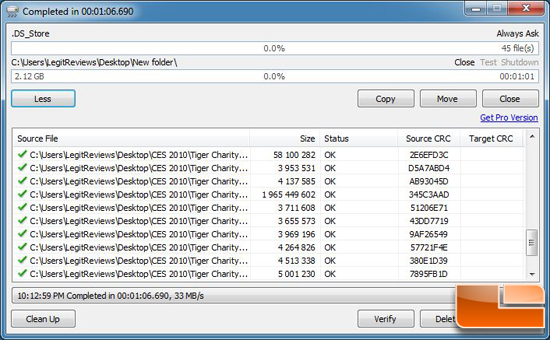
The second was a collection of MP3 files of various sizes that totaled 4.65GB collectively. These file types were chosen due to their wide use and mixture of file sizes and compression levels.
Install Results: The larger capacity drives really strut their stuff here and leave the Force 40GB and Intel 40GB drives a good distance behind. As mentioned, the lower density flash tends to be slower and this test really illustrates that it, at least in part, makes a difference. Still, moving nearly 5GB of files in just over two minutes is no small feat.
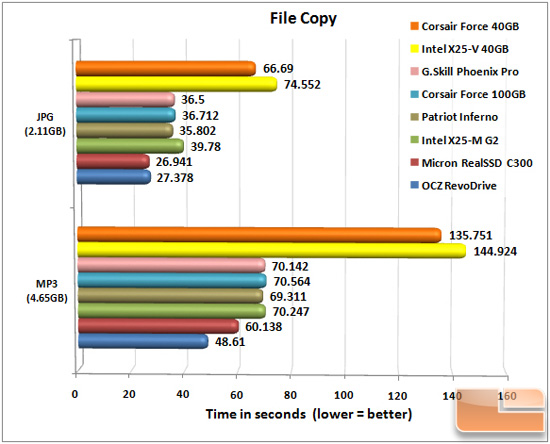
We also timed the installation of a few rather lengthy applications/suites as app installs is something everyone does and waiting for completion can be a drag. We used Adobe Dreamweaver CS5, Microsoft Office 2010 Professional and Futuremark’s 3DMark Vantage as our test subjects with all install settings at default. Both were installed from an installer located on the target drive itself as installing from another drive, especially an optical drive, would cause a bottle-neck that would corrupt the results. The timing for these had to be done via stopwatch so there should be about a half second +/- error margin. Again, with the source and target drives being the same, concurrent read/write activity is required.
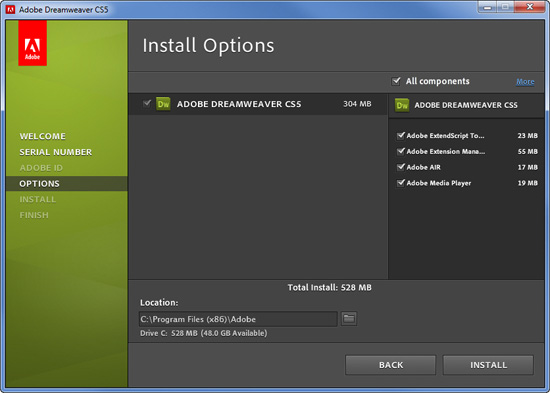
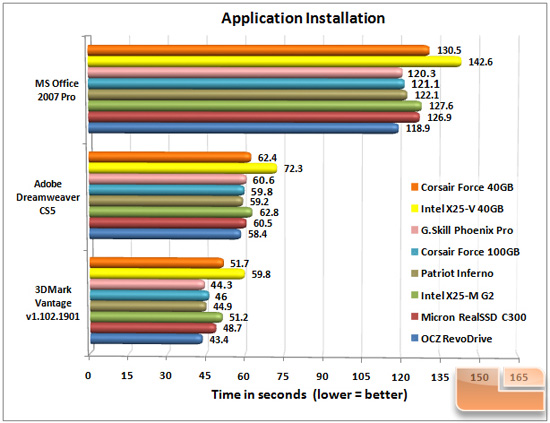
Install Results: This time the 40GB drives only marginally lagged behind the larger drives with the Intel 40GB faring the worst.
Last but not least, everyone’s favorite is the Windows startup/shutdown time check. This is one of the big reasons you want an SSD as your boot drive!
This test was also performed with a manual timing method via stopwatch and should also carry the same half second +/- margin of error. The methodology employed was to force the BIOS to allow user selection of startup drive after load and begin timing from the time the enter button is pressed until the Windows desktop appears on the screen. All of the instances of Windows were identical and freshly installed with only the NVIDIA video driver manually installed.
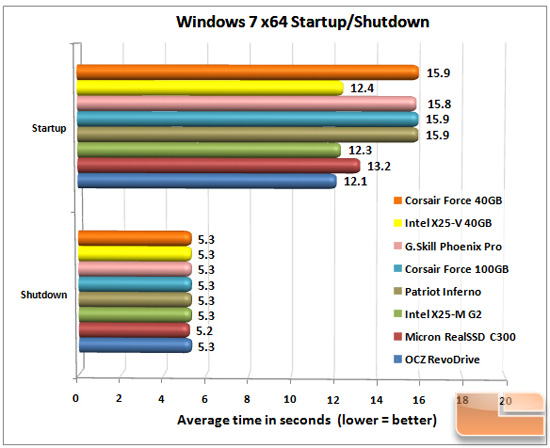
Install Results: Not surprisingly, nearly all of the drives have identical shut down times but the Intel 40GB drive really did well in the start up measurement. The Corsair Force 40GB was right on what we have seen with the other SandForce drives so no real surprise there.
We’ll wrap this with a look at the total drive capacity and our final thoughts.

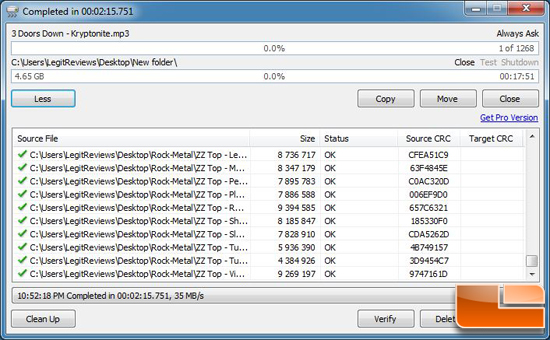
Comments are closed.